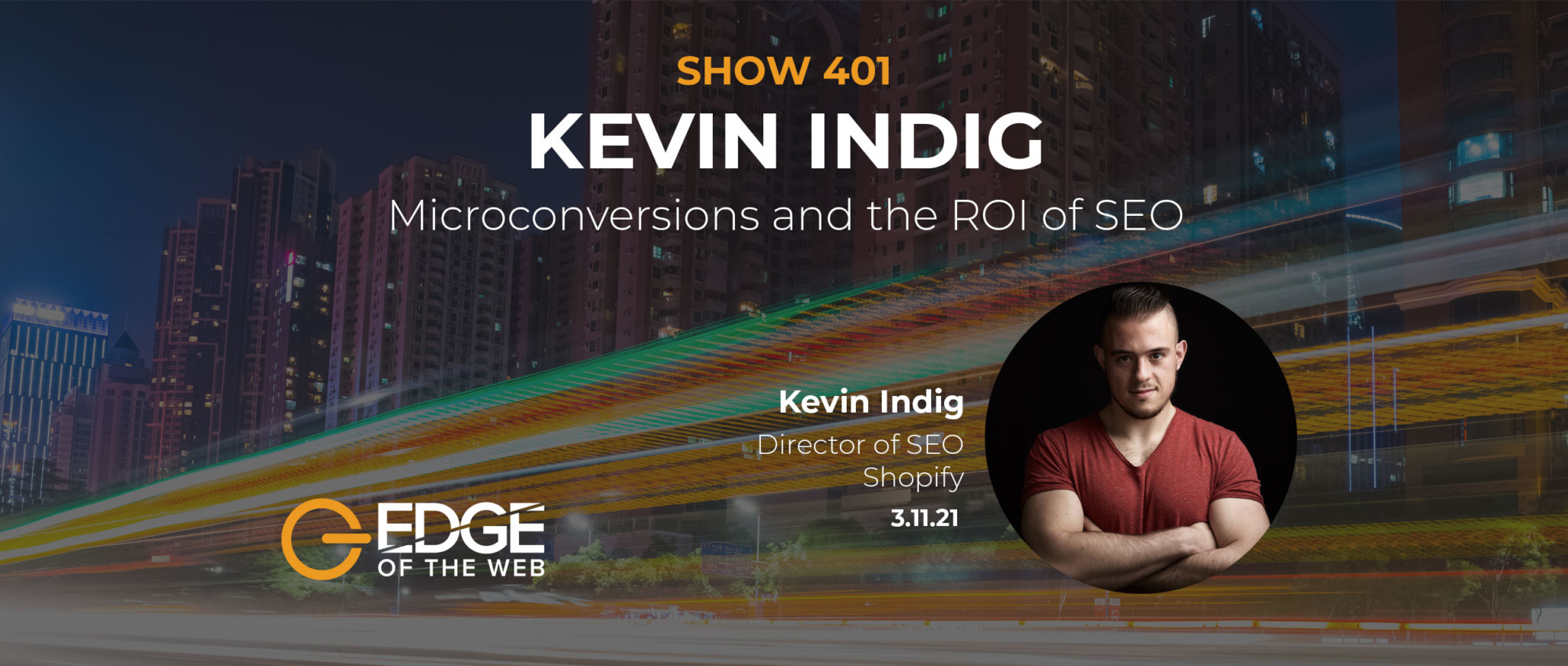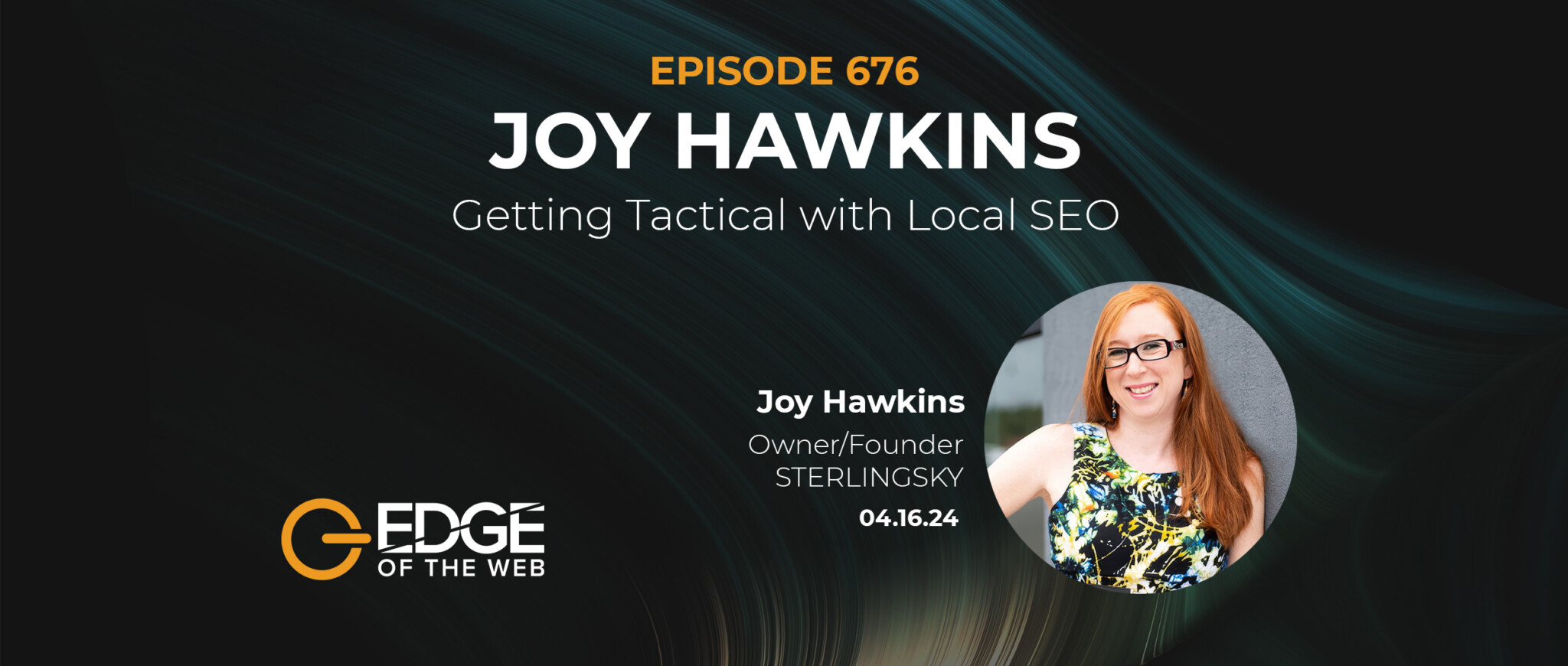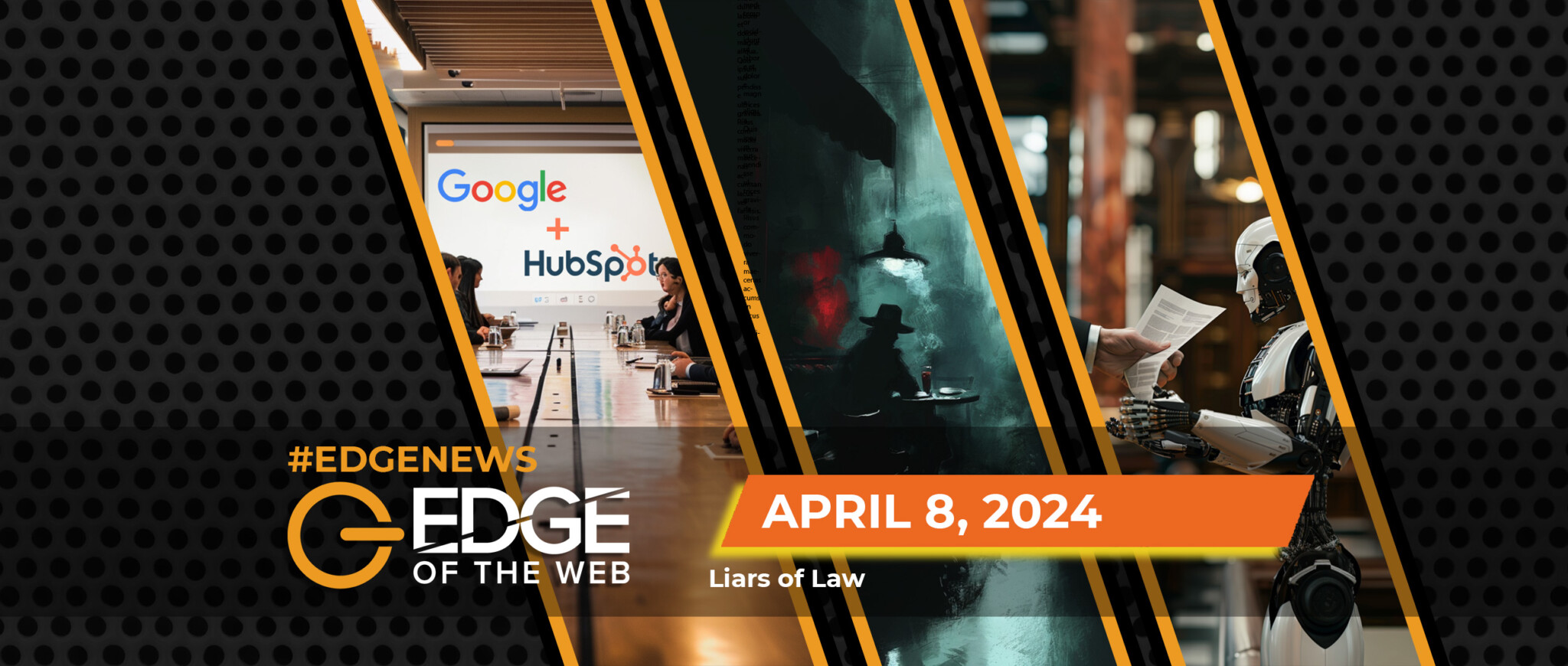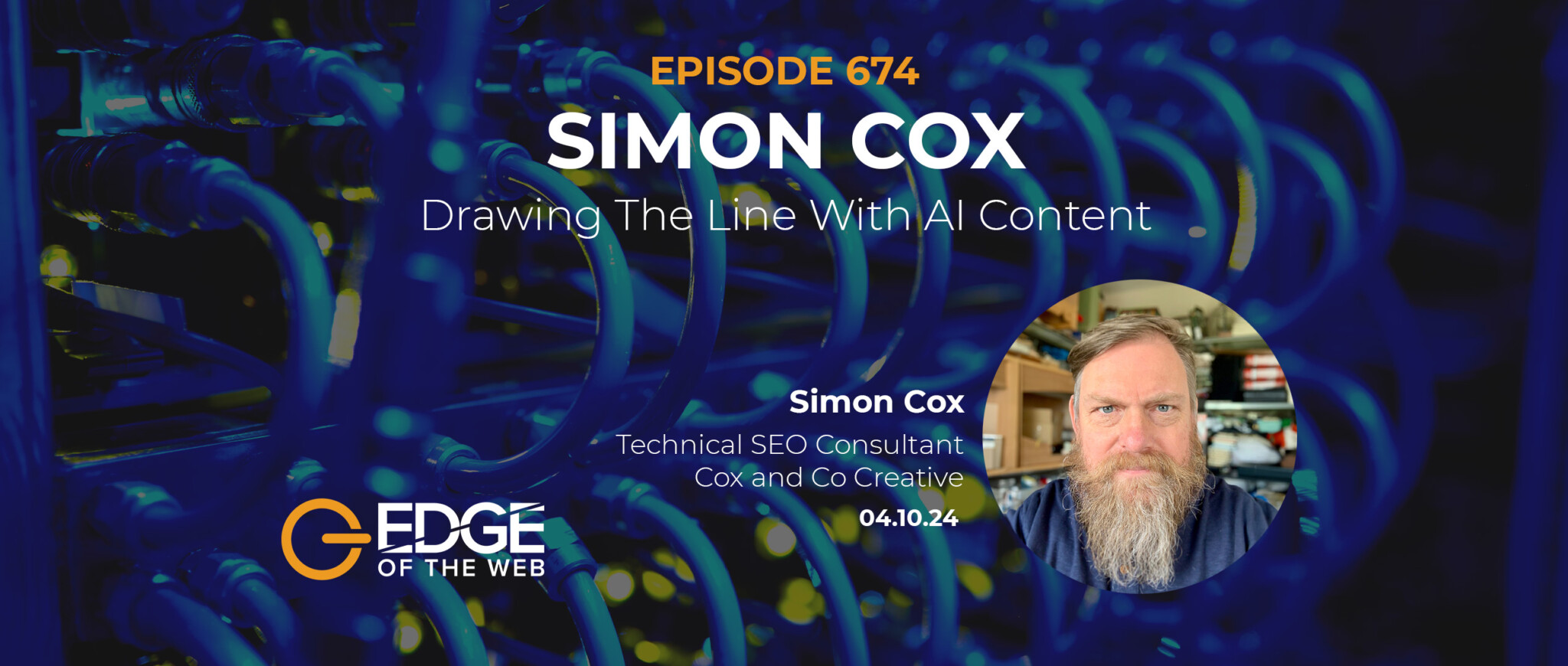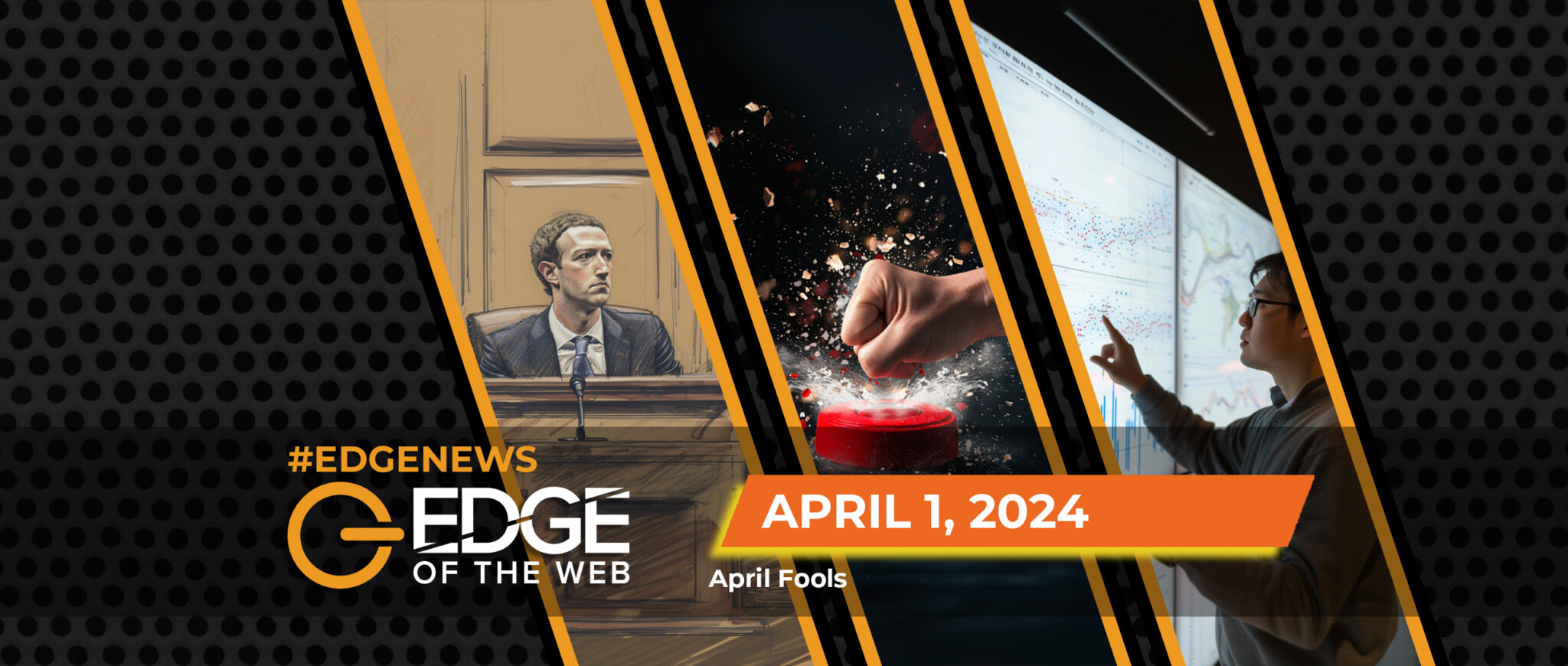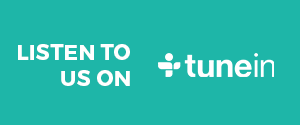Our special guest for episode 401 of the award-winning EDGE of the Web podcast was Kevin Indig, Director of SEO at Shopify. Host Erin Sparks spoke with Kevin about a better understanding of the ROI of SEO by moving away from linear models and transaction-based success goals lead in favor of behavioral modeling. Here’s what we learned:
Kevin Indig: His Background and Experience
Kevin Indig is Director of SEO at Shopify. He has helped companies acquire more than one hundred million users over the past ten years. Previously he was a Mentor for Growth at German Accelerator, VP of SEO and Content at G2, and ran SEO at Atlassian and Dailymotion. His specialty is user acquisition, brand building, and user retention. Kevin is in the trenches on the topic of SEO and even on the technical SEO front. He shares a lot of his knowledge and experience on social media and through blog content and articles. He has also been a speaker at many SEO conferences over the years and has an SEO podcast as well, Tech Bound Podcast.
Kevin’s entry into the industry was through online video gaming. When he was a teenager and broadband internet became available in Germany, he wanted to play in video game tournaments, but you had to have a website in order to do that. He taught himself how to build a website, which naturally led him into figuring out SEO as well. He soon found himself acting as an independent SEO consultant and then moved into doing in-house SEO for various companies.
Directing SEO at Shopify During a Pandemic
Every team at Shopify is focused on the common goal of growth. Kevin leads a team of 20 SEOs distributed across a number of sub-teams whose primary objective is to bring new merchants into Shopify and to keep them happy so they stay. Another piece he is responsible for is raising the awareness of SEO within the company, which includes working with the product team to develop new features that make the product more SEO-friendly. This empowers merchants to compete better by gaining more visibility in search results, which is a serious undertaking when you’re trying to compete with aggregators like Amazon.
There have been SEOs at Shopify for at least six years, but the position of Director of SEO is a brand-new one. It was needed in order to focus on building a machine of specialist teams who can really go after the different levers available to the company regarding SEO. Shopify is huge because there’s more than just Shopify.com, there are many other businesses and sites and domains they work on, and most people don’t realize that. It’s probably one of the largest SEO teams out there and Kevin may grow his team even more. Very few platforms have been making this kind of long-term investment in SEO capacity. In part, this is because Shopify is deeply committed to a growth mindset. The company sees the opportunities out there and has reached a place where Shopify is on the radar screens of more people than ever before.
Some of that has been driven by the COVID-19 pandemic and the rush to digital transformation. Like many platforms, the pandemic catapulted Shopify a good ten years into the future. It made us focus on not just helping merchants troubleshoot in moments of crisis, but to also look at the product and change it in ways to help merchants make the right choices without even needing to speak to customer service. The product goal is to make it as adaptable, flexible, and helpful as possible without needing to speak to anyone that merchants can easily see how to acquire customers through various channels. This includes new onboarding content, tutorials, courses, and more to help merchants achieve growth even when they’re new to the platform.
The ROI of SEO: Calculating and Predicting
CEOs often approach investing in SEO with skepticism. They want to know what kind of return on investment (ROI) they’re going to get. SEO gets put into the ROI hot seat much more than other channels such as social media content related to brand and engagement. Kevin talked about four main drivers of why this is the case:
SEOs tend to have needs and high demands. Content creators, designers, engineers, and so on come to the table with “asks” and changes that are seen as an investment in those digital assets. But with SEO, so much of it is somewhat out of your hands in terms of control. PPC, on the other hand, is totally in your control if you’re ready and willing to pay for it. SEOs have to settle for making educated predictions rather than promises about what will happen.
The sheer variety of factors that all come into play at the same time with SEO are a challenge, including building links, creating content, creating a good user experience, and more. The multiplicity of factors makes things “fuzzy.” When SEOs ask for developers to get involved in solving an SEO problem or implementing redirects, then suddenly people start asking what they’re going to get out of it and why to invest in that instead of something like a new product feature. When SEOs don’t know how to “speak dollars,” these conversations are tricky to navigate and often don’t work out in favor of SEO.
Much of the work done for PPC, content marketing, social media marketing, and so on are done on other platforms to either engage the customer right there or point them back to the company website/platform.
The complexity and difficulty of SEO have skyrocketed. Back in the early days, it was much simpler. You could see much clearer a direct line from implementing various SEO tactics and the impact. Now if you want to figure out what actually works you have to do all kinds of testing and planning that represents much more of an up-front investment just to figure out what to do, and that raises all those questions about ROI.
The Need for SEO Adaptability
It’s hard enough to convince a CEO or other key stakeholder to wear the “gardening hat” of viewing SEO as a slow-burn, long-term investment. It’s even harder to ask them to wear another hat, the “mad scientist hat” they need to put on to invest in the kind of testing and experimentation required to even figure out what has a chance of working. The key stakeholders simply aren’t used to wearing those hats. Below are Kevin’s tips for addressing this challenge:
- Start Small, Show Results: Rather than saying you need to overhaul 100,000 pages of content or change page titles on 100,000 pages. Pose it as seeing what happens if you make xyz changes to five or ten pages. Get some results and show them, which will create trust between the SEO and the stakeholders. If the SEO can prove results on a small scale, then it sets the stage for rolling it out on a larger scale.
- Build a Better Case: What many SEOs fail to do is show the potential of the opportunity by building out a reliable model. This should go much deeper than just identifying the most important keywords and CPCs for those, and it has to be as directly related to the business model of the company as possible. Really lay out in detail the opportunity.
- Educate: There is still much more SEOs must do around educating stakeholders on what SEO is and how it works. There is still a good deal of “black box” mystique and misinformation around this that’s simply not helpful in getting stakeholders to invest in SEO. You have to be an effective SEO advocate with key stakeholders right up to the c-suite.
SEO Project Setup with TAM (Total Addressable Market) in Mind
The key to laying out the incredible opportunity (total addressable market or TAM) to stakeholders has to be done by utilizing the right tools. It doesn’t matter so much what the specific tool is, whether SEMRush, MOZ, Ahrefs, STAT, and so on. Kevin says what matters more is how you set your projects up in those tools. And while it’s important to go deeper than just keyword rankings, a lot of the methodologies are still based on keywords. But you can bring more order to that by grouping keywords by intent, by a focused topic, and so on.
Then you have to show the total volume opportunity and how that can convert to the specific business based on an understanding of the customers for that type of business. Yes, it starts with keywords, volumes, and topics, but it doesn’t end there. Many SEOs, however, do end right there. You have to be able to model out what impact the rankings are going to have on the business according to its business goals and the bottom line of the company. The tool is just a means to this end.
It’s also important to let go of the idea that there’s just a single goal for each visitor to your website. For example, if you get ranking on a blog article for a short-hand keyword, you have to understand that people search that short-hand keyword with different intentions. There is going to be some ambiguity around what people are really looking for. Any given person might come to the site with a slightly different intention than a majority of people searching that keyword.
Instead of just assuming the goal is to channel everyone into the same type of conversion process, think about what else might be helpful to that visitor if their intent is different. This is when you might want to have any number of “micro-conversions” that aren’t directly related to your main conversion goal. It could be newsletter signups or clicking on related articles, or clicking through to other areas of your site. When you examine traffic in this way, you start to see patterns and can begin optimizing for those patterns. This can help increase hard and soft or macro and micro conversions because you’re creating more paths that can serve a variety of intentions of visitors.
You don’t need a whole team of data scientists to do this. Much of it can be done with basic tools such as Google Analytics, Google Search Console, and the underestimated Clarity tool from Microsoft Bing. Optimizing for micro-conversions can have a huge payoff, especially the more sales-driven a company is. The new school of SEO is driven by mapping and modeling the behavior of site visitors and a deeper understanding of the variety of intent they bring when visiting. Open your mind to truly learning and understanding what users want and follow it.







